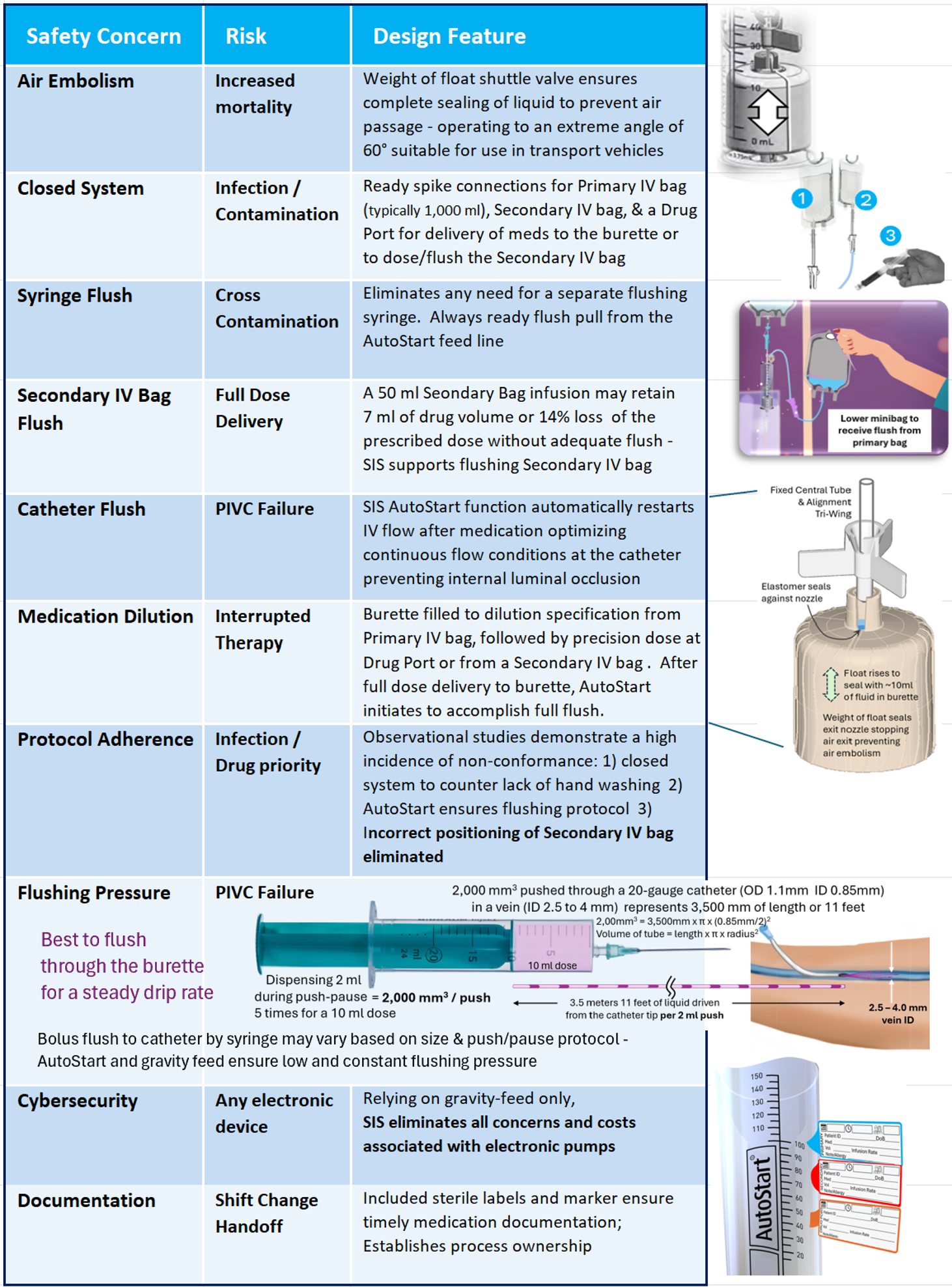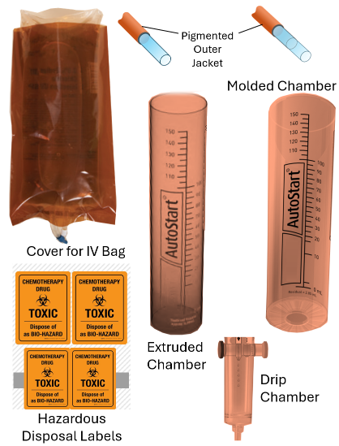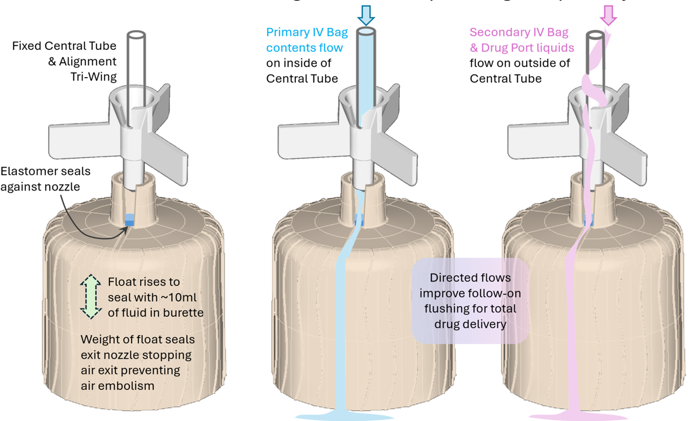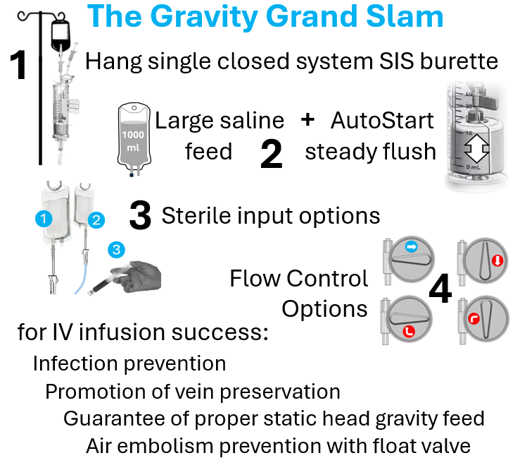How We Improve Infusion Outcomes
35% to 50% of PIVCs fail, according to 2021 Infusion Therapy Standards of Practice, before their intended use is complete due to complications like phlebitis, infiltration, occlusion, or infection. Comparing infusion nurse-inserted catheters to generalist nurse insertions found lower rates of leakage, phlebitis, and infiltration (statistically significant), but still noted complications in 20-30% of cases even with skilled hands (A 2005 study in the Journal of Infusion Nursing (Palefski & Stoddard))

Improving IV Therapy Outcomes
How we are helping to improve outcomes:
Simplify IV fluid setups with a single, universal system that
Facilitates the correct static head for optimum gravity feed.
Eliminates the potential for air embolism in the IV line.
Adapted for multiple inputs, all delivered with gentle drip flow.
Positions the drip chamber at eye level for caregiver awareness.
Re-establishes saline flow after any medicinal input without caregiver.
Intervention for steady catheter flow to optimize vein patency.
Enables a ready minibag or syringe flush for complete drug delivery.
Emphasis on sterile labeling of each fluid event for quality of care.

Safe & Effective Oncology Infusions
Safer Infusion Systems solves your toughest infusion challenges—handling hazardous antineoplastic compounds. Sis oncology™’s comprehensive materials approach takes caustic and light-sensitive fluids in stride, protecting the caregiver and patient while optimizing infusion success through gentle, gravity fluid delivery, replacing electronic pumping to enhance vein patency. Note: when extreme precision is necessary, the sis is entirely compatible with electronic pump devices.
Ask for Our White Paper
“Revitalizing Gravity-Fed IVs to Improve Vein Patency and Eliminate Caregiver Errors Through Standardization.”





